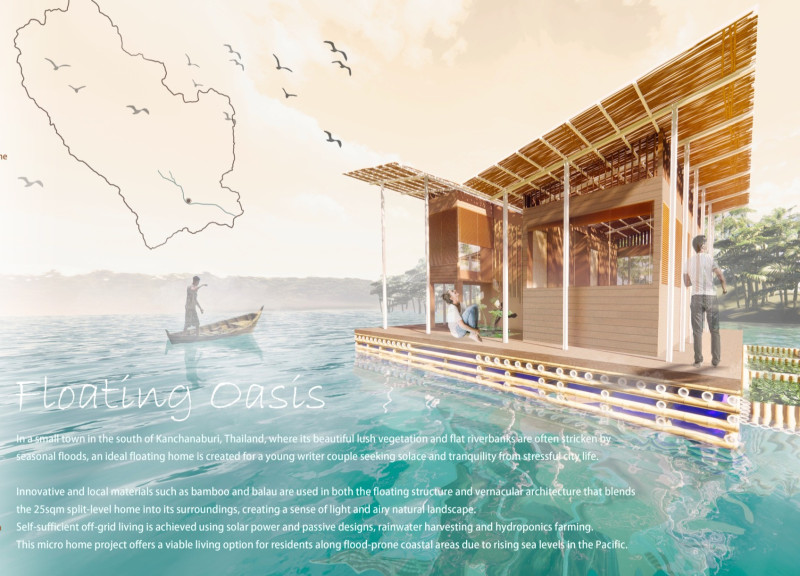5 key facts about this project
The Floating Oasis is located in Kanchanaburi, Thailand, designed for a young couple looking for peace away from city life. Surrounded by green vegetation and flat riverbanks, which are often affected by seasonal floods, the home addresses these environmental challenges while blending with its natural setting. The focus is on self-sufficiency and sustainability, creating a living space that works with the local climate.
Design Concept and Spatial Organization
Measuring 25 sqm, the home has a split-level layout with clearly defined areas like a working space, sleeping area, dining section, kitchen, bathroom, meditation room, scenic pond, and hydroponic garden. This organization allows the couple to engage in various activities comfortably. The design emphasizes natural light and air flow, which contributes to a pleasant living environment.
Water Management Systems
A rainwater harvesting system is an essential feature of the Floating Oasis. Water is collected in a central storage compartment placed between the kitchen and bathroom. This system filters and purifies the rainwater for daily use. Additionally, grey water from everyday activities is treated in the hydroponic garden. This approach minimizes waste and enhances the garden’s productivity, highlighting the method of using resources wisely.
Energy Strategy
The home utilizes solar energy, with photovoltaic panels installed on the roof. These panels generate electricity that is stored in the batteries located beneath the structure. This system ensures a steady power supply for the household, allowing the occupants to live independently from external electricity sources.
Material Selection and Passive Design
Local materials like bamboo and balau are used in construction, reinforcing the connection to the cultural context of the area. Passive design elements, including deep eaves and high ventilation openings, promote effective cooling and airflow throughout the home. These features not only improve comfort but also help anchor the home within its environment.
At its heart, the design includes a scenic pond designed to offer views and create a natural habitat, showcasing a commitment to ecological balance.



















































